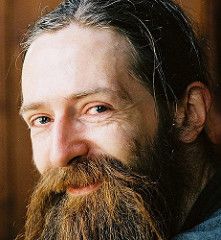AI is our best hope for long term survival. If we fail to create it, it will happened by some reason. Here I suggest the complete list of possible causes of failure, but I do not believe in them. (I was inspired bu V.Vinge artile “What if singularity does not happen”?)
I think most of these points are wrong and AI finaly will be created.
Technical reasons:
1) Moore’s Law will stop by physical causes earlier than would be established sufficiently powerful and inexpensive apparatus for artificial intelligence.
2) Silicon processors are less efficient than neurons to create artificial intelligence.
3) Solution of the AI cannot be algorithmically parallelization and as a result of the AI will be extremely slow.
Philosophy:
4) Human beings use some method of processing information, essentially inaccessible to algorithmic computers. So Penrose believes. (But we can use this method using bioengineering techniques.) Generally, the final recognition of the impossibility of creating artificial intelligence would be tantamount to recognizing the existence of the soul.
5) The system cannot create a system more complex then themselves, and so the people cannot create artificial intelligence, since all the proposed solutions are too simple. That is, AI is in principle possible, but people are too stupid to do it. In fact, one reason for past failures in the creation of artificial intelligence is that people underestimate the complexity of the problem.
6) AI is impossible, because any sufficiently complex system reveals the meaninglessness of existence and stops.
7) All possible ways to optimize are exhausted.AI does not have any fundamental advantage in comparison with the human-machine interface and has a limited scope of use.
8. The man in the body has a maximum level of common sense, and any incorporeal AIs are or ineffective, or are the models of people.
9) AI is created, but has no problems, which he could and should be addressed. All the problems have been solved by conventional methods, or proven uncomputable.
10) AI is created, but not capable of recursive self-optimization, since this would require some radically new ideas, but they had not. As a result, AI is there, or as a curiosity, or as a limited specific applications, such as automatic drivers.
11) The idea of artificial intelligence is flawed, because it has no precise definition or even it is an oxymoron, like “artificial natural.” As a result, developing specific goals or to create models of man, but not universal artificial intelligence.
12) There is an upper limit of the complexity of systems for which they have become chaotic and unstable, and it slightly exceeds the intellect of the most intelligent people. AI is slowly coming to this threshold of complexity.
13) The bearer of intelligence is Qualia. For our level of intelligence should be a lot events that are indescribable and not knowable, but superintellect should understand them, by definition, otherwise it is not superintellect, but simply a quick intellect.
Continue reading “Why AI could fail?” »

 The summer 2010 “
The summer 2010 “ Also speaking at the H+ Summit @ Harvard is
Also speaking at the H+ Summit @ Harvard is 






